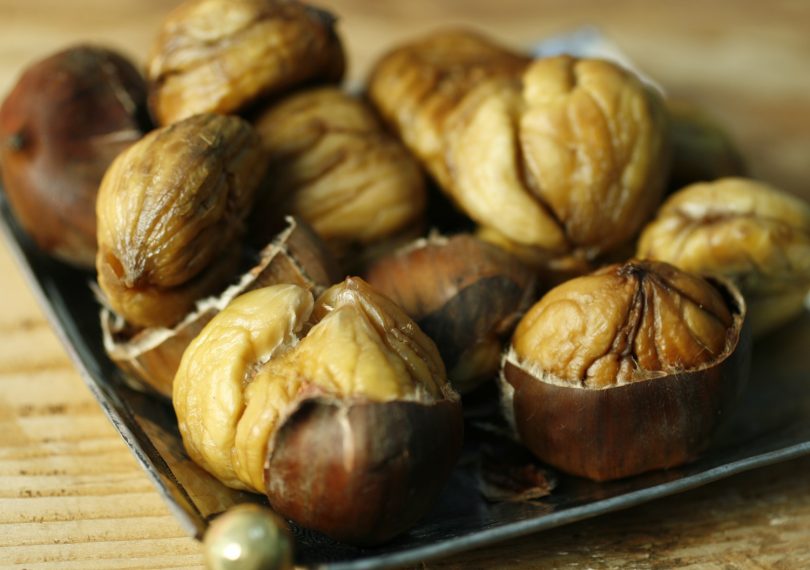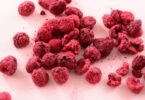Learn how to dry chestnuts at home!
Chestnuts are much healthier than many people realize. When you dry them, they last much longer and, therefore, can be beneficial to you for a longer period of time. Chestnuts have less fat than nuts such as walnuts and pecans, and they are high in fiber, low in carbohydrates, and best of all, very flavorful as well.
Why Dry Your Chestnuts?
Chestnuts are tasty and good for you regardless of how you prepare them, and when you dry or dehydrate them, they provide an even better taste. Dried chestnuts are also convenient because you can reconstitute them in the water later on and either eat them like they are or use them in a variety of recipes.
When you decide you want to use your chestnuts at a later date, drying chestnuts is a great way to preserve them so they stay yummy-tasting until you decide to use them again. The dehydrating process also involves nothing fancy and in fact, it can often be done in your home using just what you have in your kitchen.
Dehydrating, or roasting chestnuts is so easy and produces such great results that you’ll likely find yourself craving this delicious food even if it isn’t the holidays, and below are three excellent methods you can use to get your chestnuts perfectly dried every time.
How to Dry Chestnuts
Drying chestnuts in the oven
Drying chestnuts in the oven is simple and doesn’t take very long.
- To start with, if you have chestnuts that are shelled, you can immediately begin the drying process; however, if your chestnuts are raw and in their shells, you’ll need to soak them in warm water for 25 minutes. Put the chestnuts in a bowl and fill up the bowl with warm water, making sure all of the chestnuts are completely covered.
- After 25 minutes, remove the chestnuts and cut an X into each of them using a sharp knife. You can also make a straight cut along the top side of the nut, and make sure you don’t go so deep that you cut into the meat. This is done so the nuts don’t explode once they get into the oven.
- Place the nuts on a lined baking pan in a single layer, and after you preheat the oven, place the pan inside of the oven and bake them at 350F for 25 minutes. You’ll notice that the shell is now peeled back around the area where your cut was, which is how they’re supposed to look.
Next, after the chestnuts have cooled off slightly but are still warm, go ahead and peel the skin off until nothing is left but the meat. Some of the chestnuts will have to be thrown out, including those that are black, have a moldy look, look off-color, or which are too hard to open while you’re peeling them.
READ ALSO: What You Need to Know to Successfully Dehydrate Food in the Oven
Drying chestnuts in the open air
To dry them in the open air, you have to first choose a spot with good airflow and which consistently remains at room temperatures, such as a table or countertop. Start by placing the chestnuts in single layers on lined baking sheets. If you can, try to leave spaces between each nut so that even more air passes through them.
Leave the nuts alone for three to seven days. You’ll know when they’re dry enough when you’re able to squeeze them about 1/16” with ease. You may have to test them daily to know when they get dry. Once they’re completely dry, you can remove the shells and use the meat as you wish. Make sure they don’t harden completely or they will be inedible, which is why checking them every day is so important.
Drying chestnuts in the dehydrator
If you use a dehydrating machine, you can use the instructions for that particular model, but here are a few things to keep in mind regardless of which one you buy.
- Keep the temperature at no more than 100° Fahrenheit
- Drying time averages 12 hours
- Fresh, unshelled nuts can take up to three days to dry
- Shelled nuts can take up to two days to dry
- Once they harden completely, leave them alone and do not take the shell off
To eat them, first, soak them in water for four to six hours or until they can be shelled and used.
Storing Dried Chestnuts
To store dried chestnuts, simply place them in sealed bags either in the refrigerator, where they can be kept for up to three months; or in the freezer, where they can last for up to 12 months. Remember never to keep them in a warm, moist place or they will turn moldy. Also remember that shelled and dried chestnuts generally last longer than fresh chestnuts, even though they sometimes lose some of their flavors.
Drying or roasting chestnuts is a simple and inexpensive thing to do, and all it takes is a few tips for you to be successful at it, which is one of the reasons this food is such a popular one especially during the holidays.





